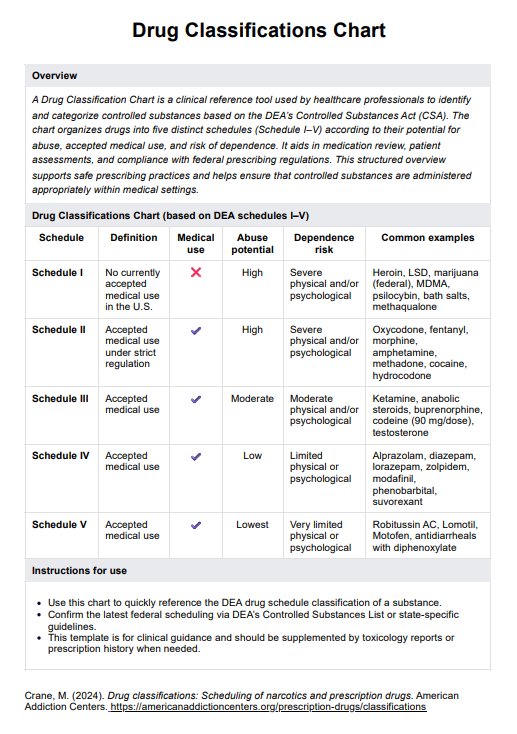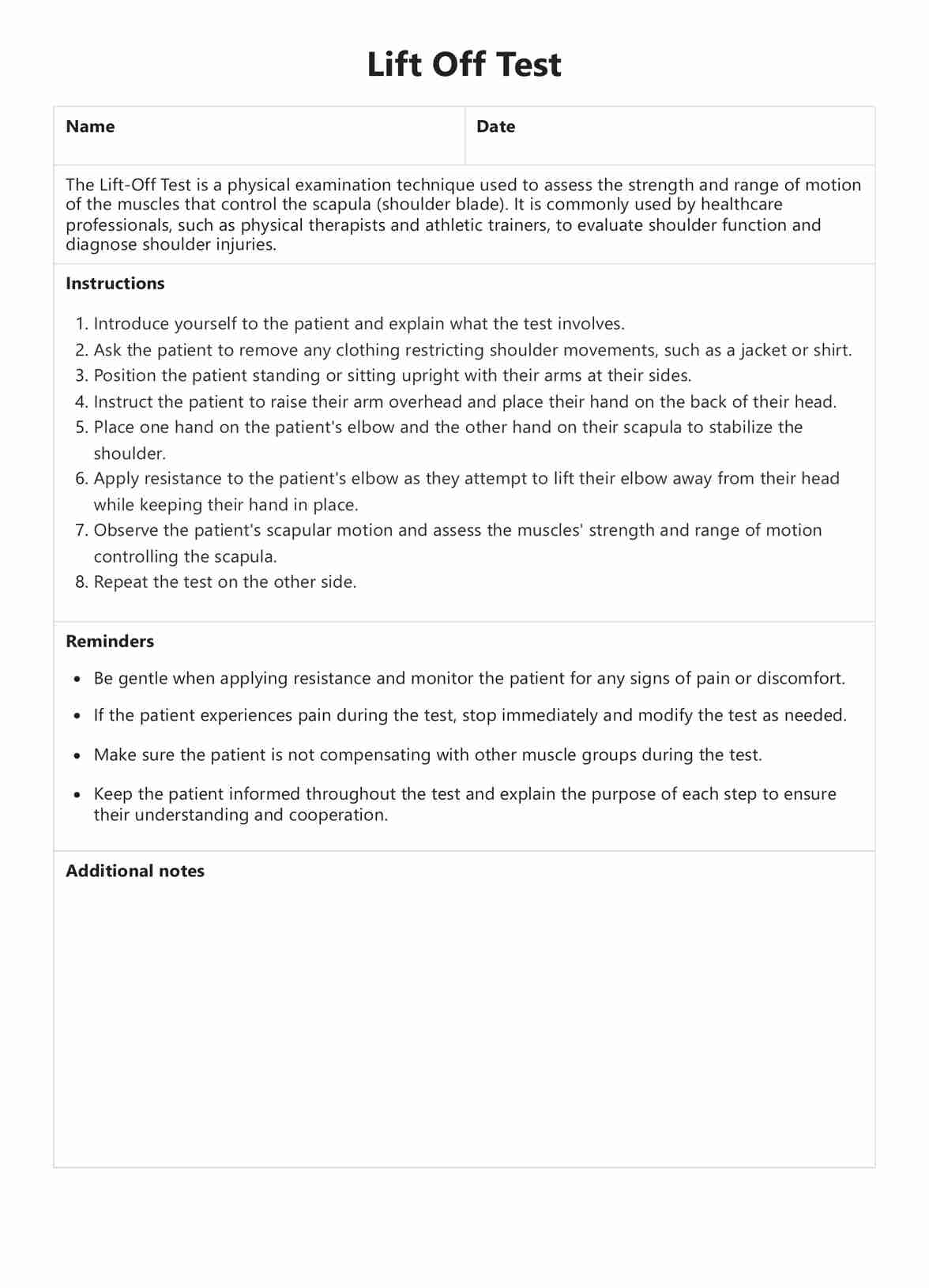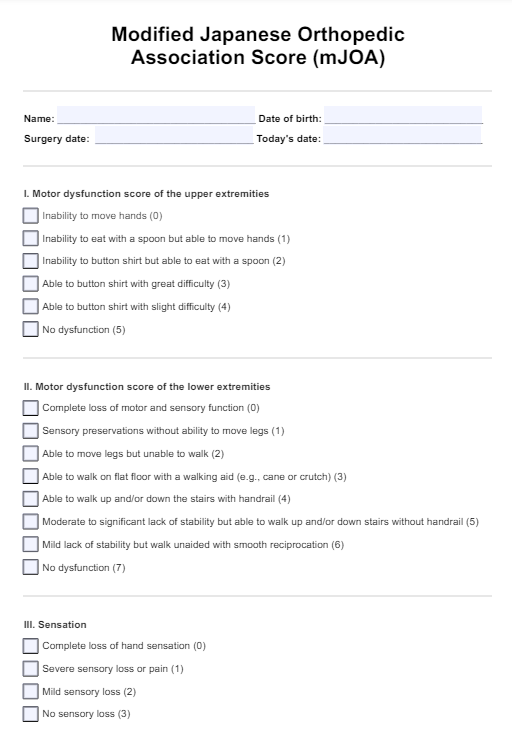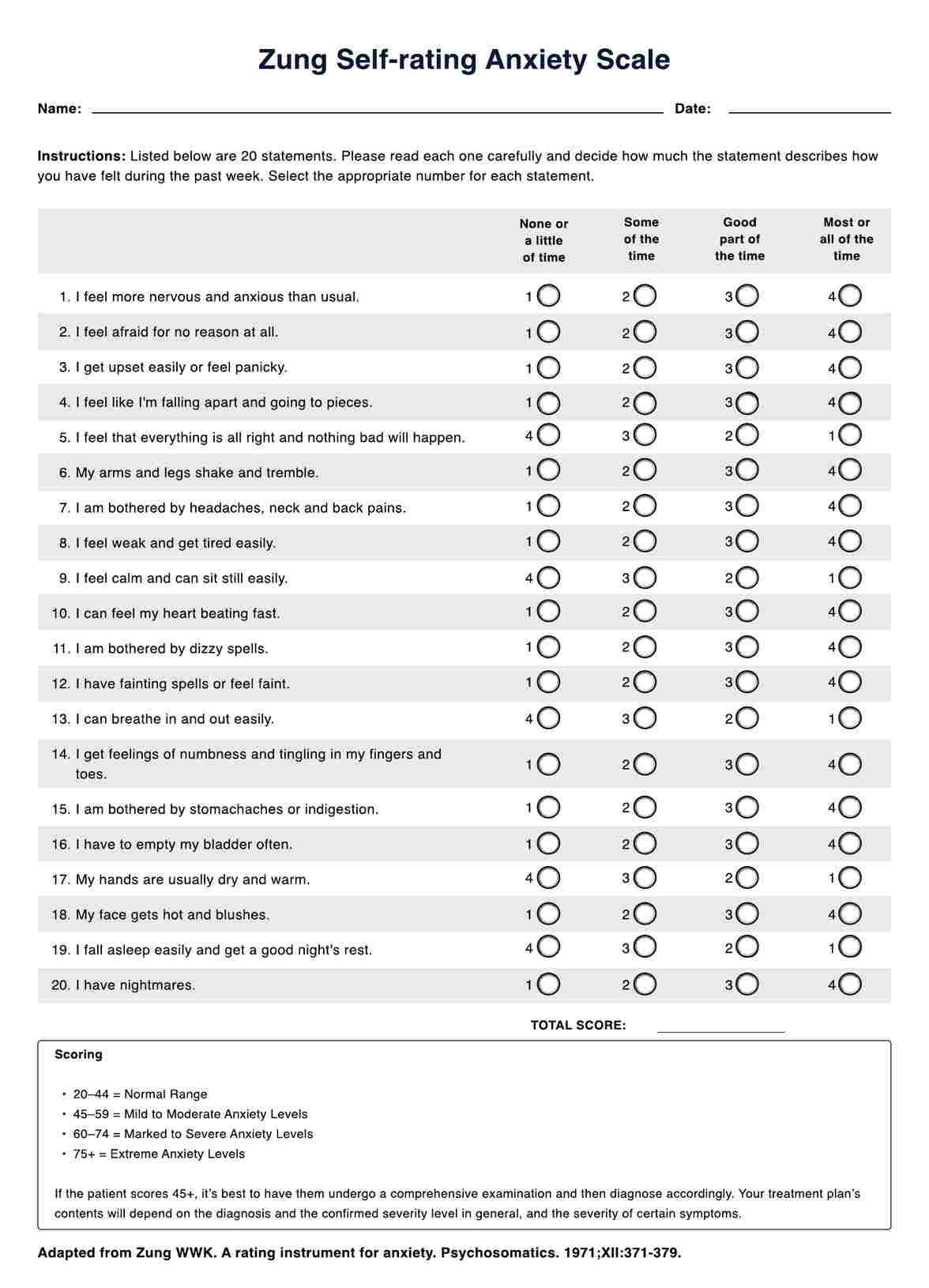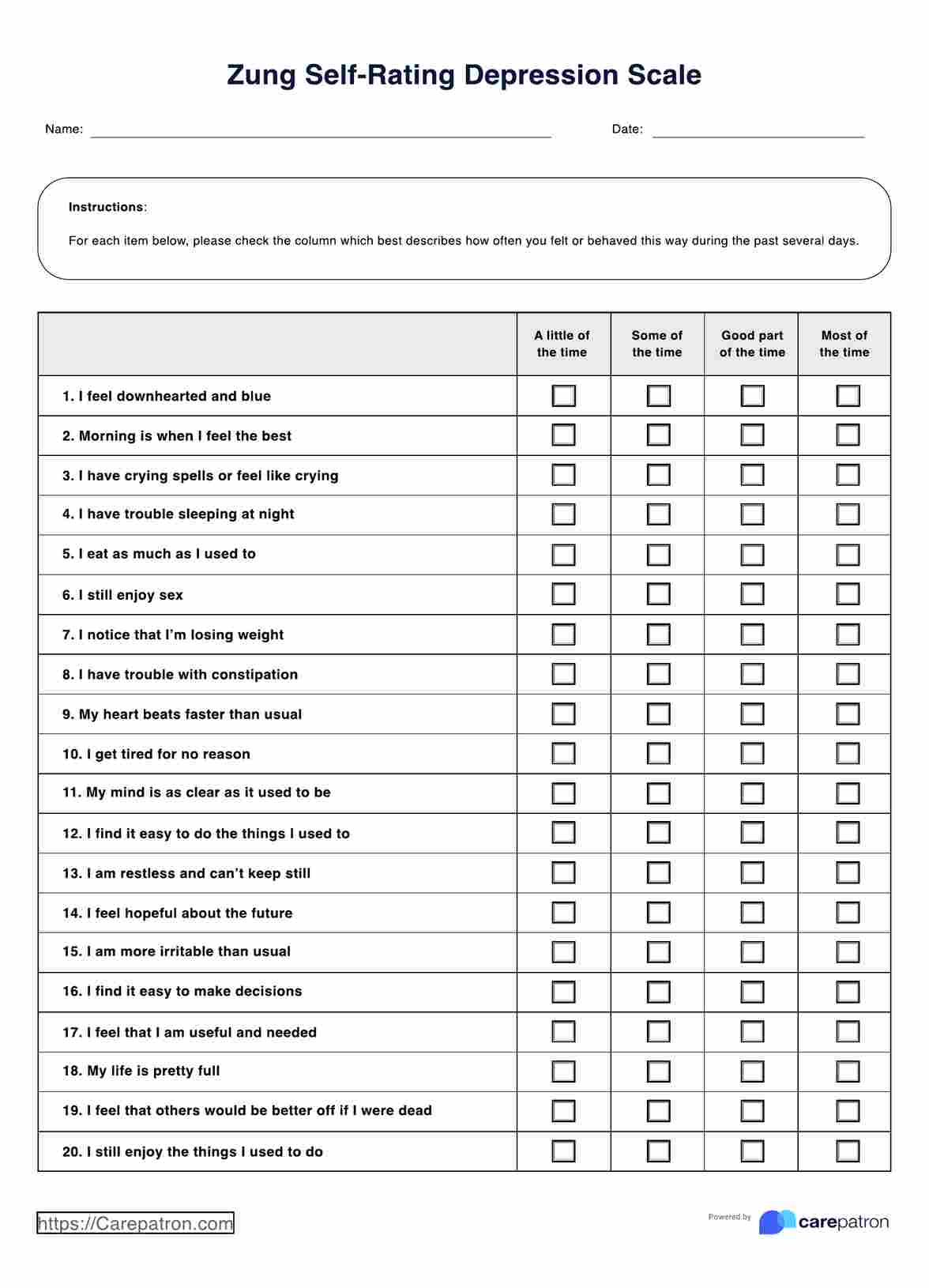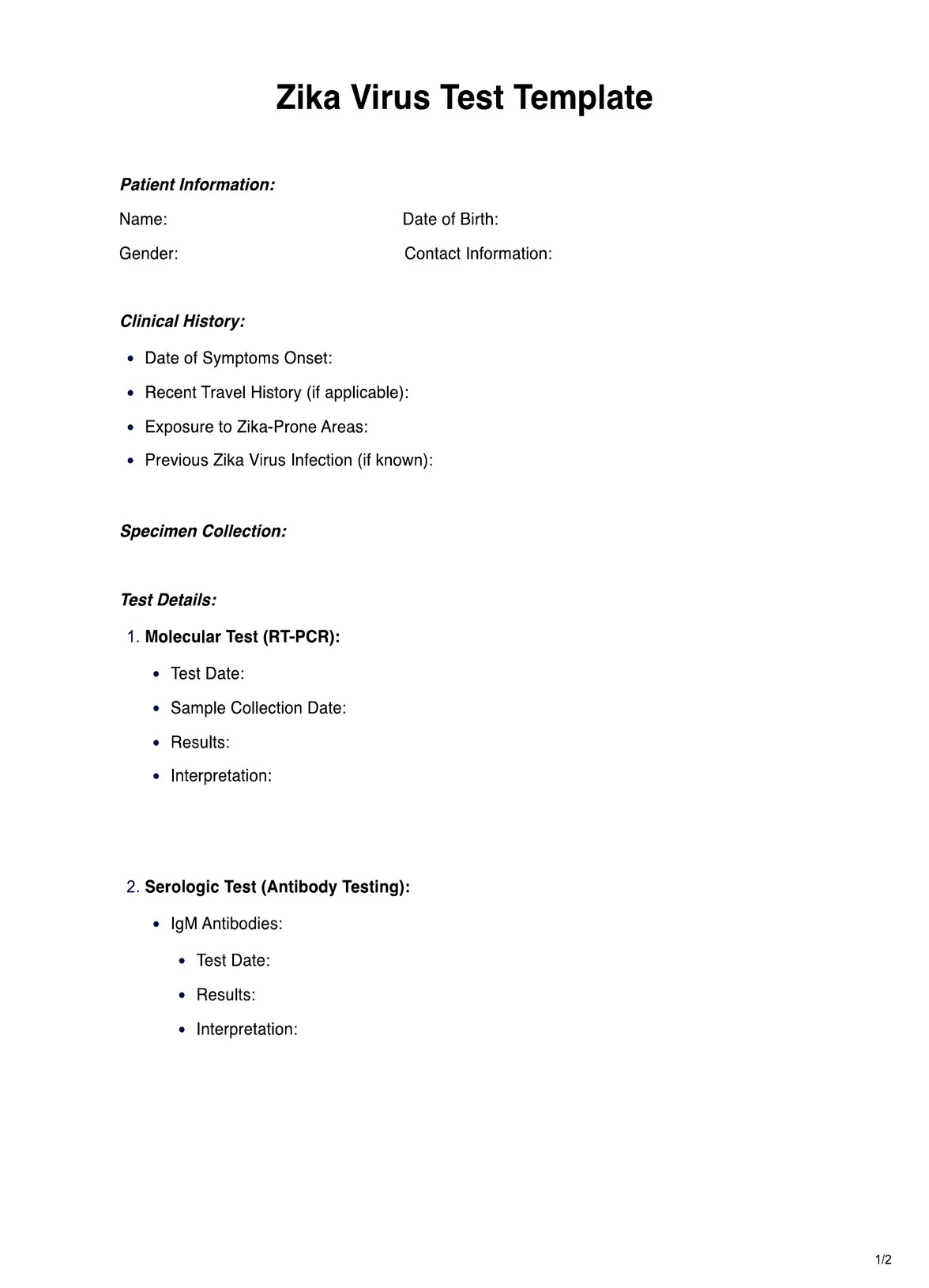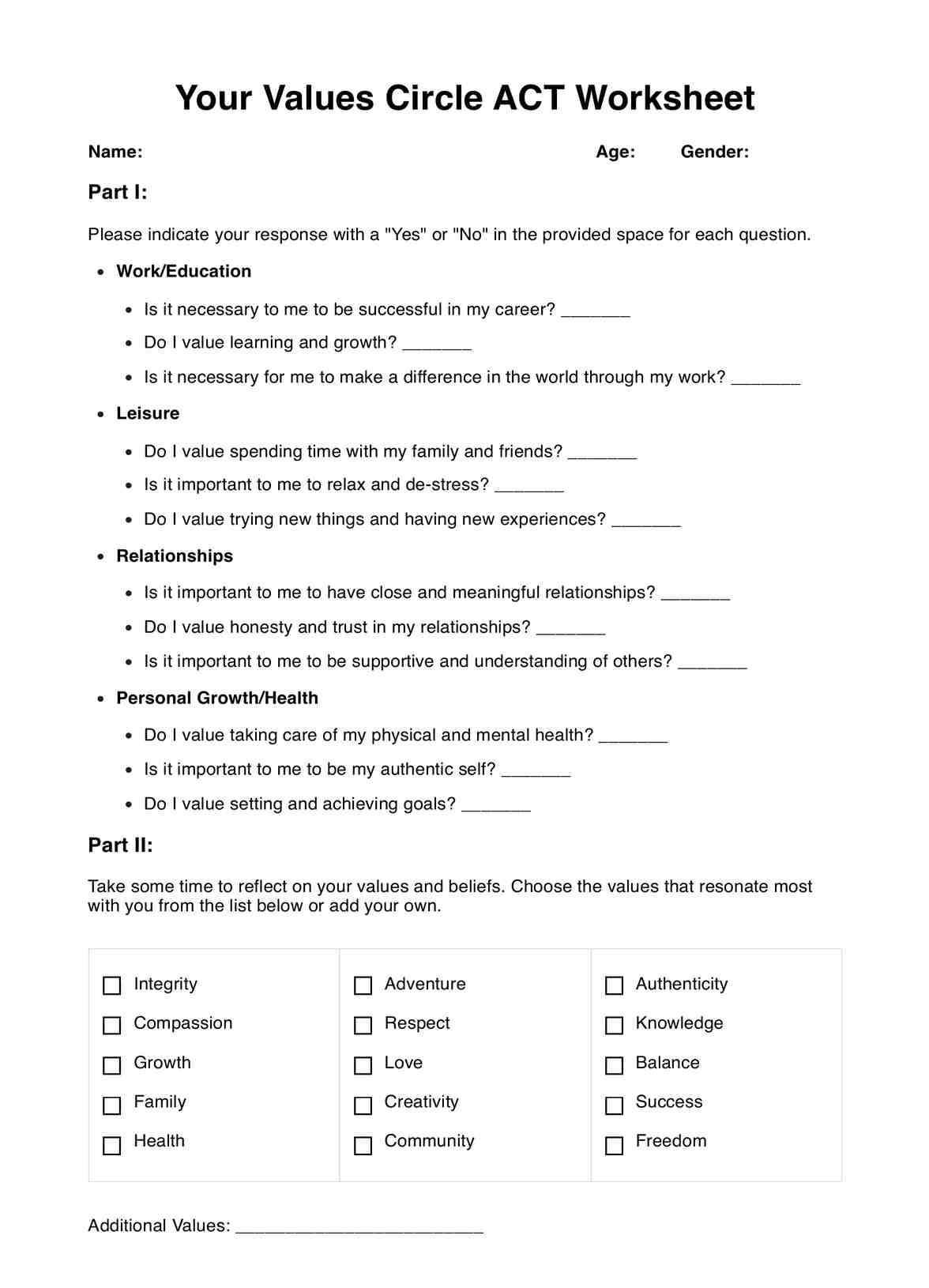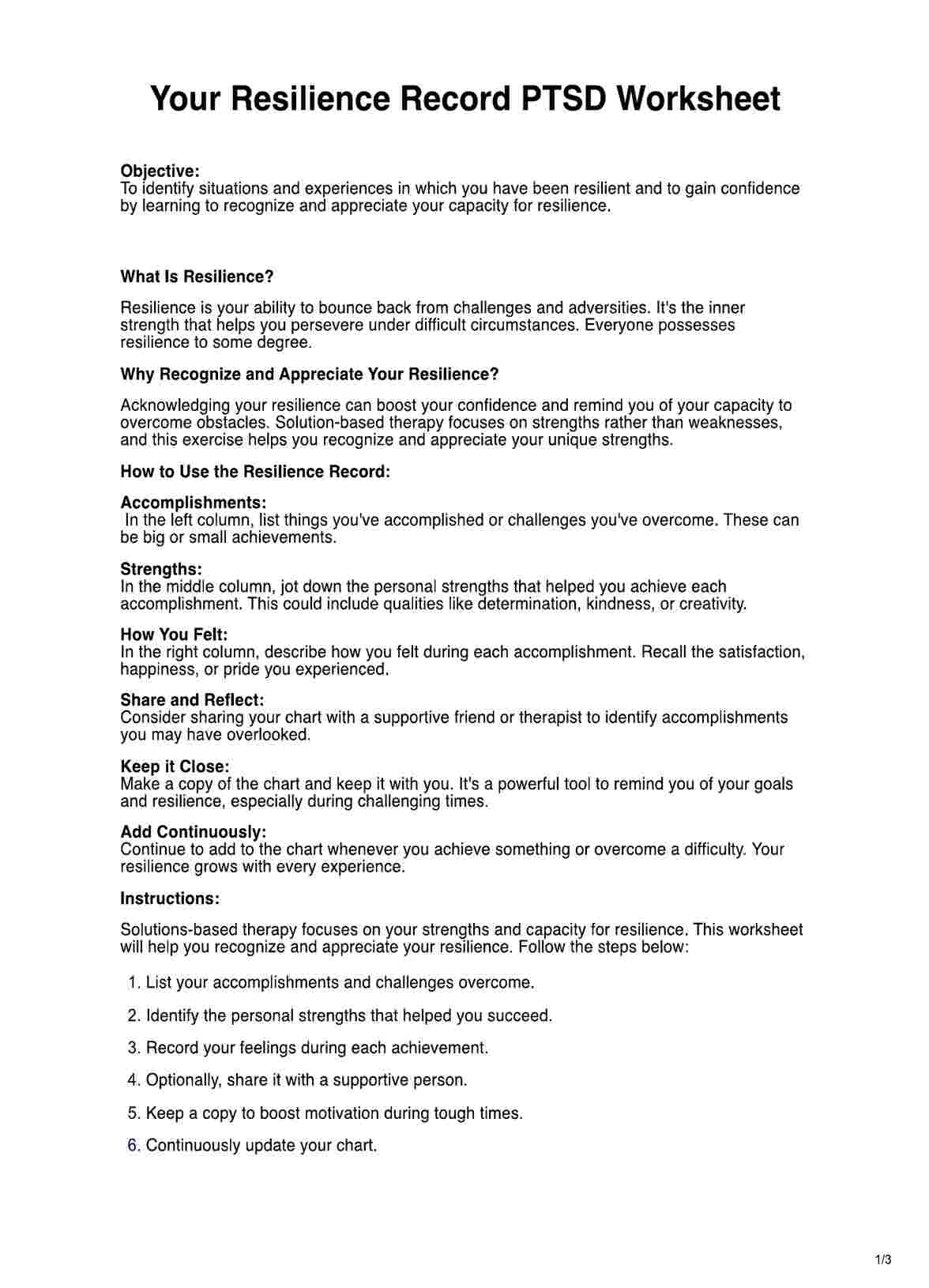Ketogenic Diet Food Lists offer valuable information that aids in educating patients about the keto diet. Specifically, the referring physician can employ the ketogenic diet food list to assist clients in distinguishing this diet from other low-carb diet alternatives.
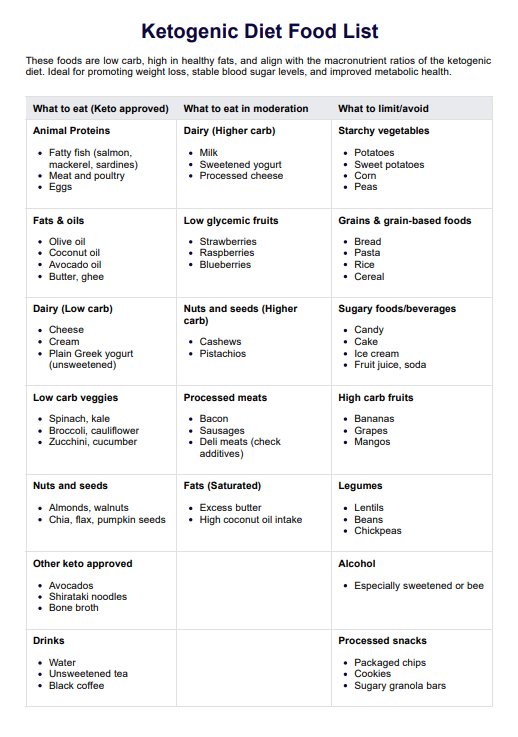
Ketogenic Diet Food List
Provide your patient with a ketogenic diet food list when they’re interested and are medically approved to try out the popular diet. Click here for a free template copy.
Use Template
Ketogenic Diet Food List Template
Commonly asked questions
The primary purpose of the ketogenic diet food list template is to serve as an educational resource or reference.
The duration of adherence to the ketogenic diet food list varies based on individual goals and preferences, as well as the discretion of the referring physician, considering the patient's condition.
EHR and practice management software
Get started for free
*No credit card required
Free
$0/usd
Unlimited clients
Telehealth
1GB of storage
Client portal text
Automated billing and online payments


